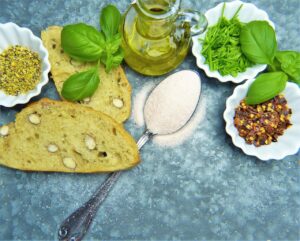As an Amazon Associate, I earn from qualifying purchases.
Page Contents
ToggleIntroduction
Cooking is both an art and a science, and precise measurements play a crucial role in achieving culinary excellence. Whether you’re a seasoned chef or an amateur cook, using the right amount of ingredients can make all the difference in your dish. Teaspoon measurements, in particular, are often required in recipes for added precision. In this article, we will explore various teaspoon measurement hacks that allow you to measure teaspoons accurately using a spoon.

The Basics of Teaspoon Measurement
Before delving into the hacks, let’s understand the significance of teaspoon measurements in cooking. Teaspoon measurements refer to the volume of ingredients needed in a recipe, typically in small quantities. The accuracy of these measurements can greatly affect the taste and texture of the final dish.
Following the standard guidelines for teaspoon measurement is essential for achieving consistency in your culinary creations. The standard teaspoon measurement equals 5 milliliters (ml). However, it’s crucial to note that not all spoons are created equal, and variations in size and shape can impact measurement accuracy.
Understanding Different Spoon Types
To successfully measure a teaspoon using a spoon, it’s important to familiarize yourself with the different spoon varieties available. While the teaspoon is a standard measurement unit, various spoon shapes and designs exist. Some common types include the teaspoon, tablespoon, dessert spoon, and coffee spoon. Each of these spoons holds a different volume of liquid, making them suitable for different measurements.
Identifying a suitable spoon for precise teaspoon measurement depends on the size and depth of the spoon, as well as the quantity of the ingredient being measured. Experimenting with different spoon types can help you find the perfect match for your cooking needs.
Teaspoon Measurement Conversions
While teaspoon measurements are widely used in cooking, it’s essential to be aware of their conversions with other measurement units. Understanding these conversions allows you to adapt recipes and ensure accuracy in your cooking.
For example, if a recipe calls for a tablespoon (which is equivalent to three teaspoons), you can use this conversion to adjust your measurements accordingly. Similarly, knowing the gram and ounce equivalents of a teaspoon measurement enables precise measurements for both dry and liquid ingredients.
MECE Framework: Mutually Exclusive and Collectively Exhaustive
To ensure the utmost accuracy in teaspoon measurements, embracing the MECE framework can be immensely helpful. MECE stands for “mutually exclusive and collectively exhaustive,” and it is a problem-solving tool that promotes clarity and precision.
By applying the MECE framework to your teaspoon measurement hacks, you can be confident that you are covering all possible scenarios and avoiding any overlapping or ambiguous approaches. This framework acts as a powerful guide to achieving foolproof teaspoon measurements.
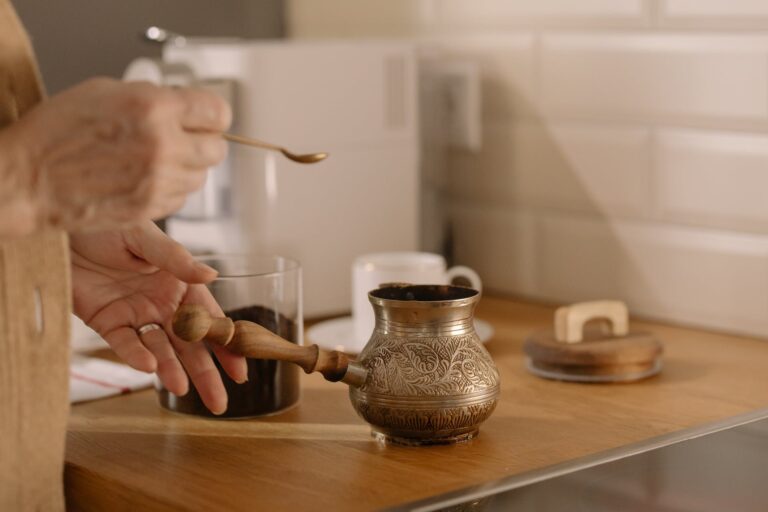
The Teaspoon Hacks
Spoon Tilt Method: Step-by-Step Guide for Accurate Teaspoon Measurement
One popular teaspoon measurement hack is the spoon tilt method. This technique involves using the edge of a spoon to level off any excess ingredients, ensuring an accurate measurement. Here’s a step-by-step guide to mastering the spoon tilt method:
Start by filling the spoon with the ingredients you want to measure. It’s important to avoid compacting the ingredient, as this can lead to inaccurate measurements.
Once the spoon is filled, use the back of a butter knife or any other straight edge to level off the excess ingredient by gently tilting the spoon from side to side.
Maintaining a steady hand, ensure that the edge of the spoon is parallel to the surface of the ingredient. This enables us to measure with precision and consistency.
Remove any excess ingredients that may still be clinging to the spoon, ensuring that you have a precise teaspoon measurement.
Avoiding Common Mistakes in the Spoon Tilt Method
While the spoon tilt method is a fantastic hack for accurate teaspoon measurement, it’s important to be mindful of some common mistakes that can compromise its effectiveness. Here are a few key things to watch out for:
Avoid pressing down too firmly on the ingredient, as this can lead to an inaccurate measurement. Allow the ingredients to settle naturally in the spoon.
Use a steady, controlled hand when leveling off the excess ingredient. Rushing or applying excessive force can result in an imprecise measurement.
Regularly check that the spoon is parallel to the ingredient surface to maintain accuracy throughout the process.
Be aware of the size and shape of your spoon. Different spoons may hold varying volumes, even if they are labeled with the same measurement.
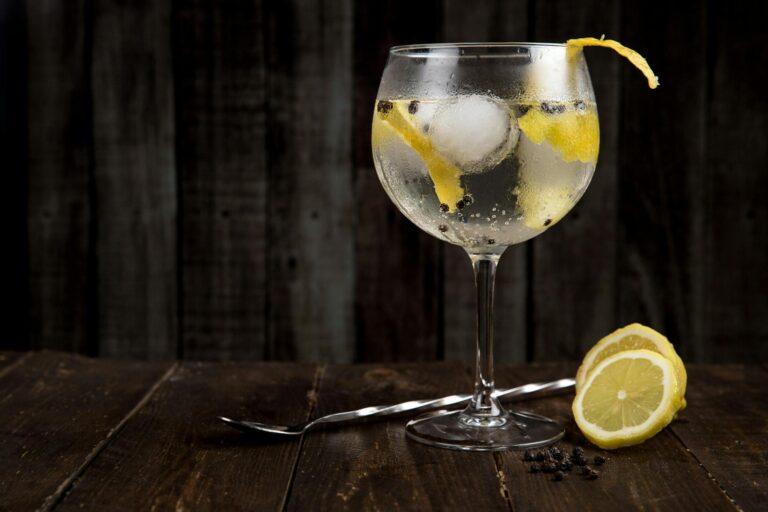
Water Displacement Technique: Mastering Accurate Teaspoon Measurement
For ingredients that are difficult to measure using the spoon tilt method, the water displacement technique offers a reliable alternative. By using water, you can achieve precise teaspoon measurements, especially for ingredients with irregular shapes or varying densities. Here’s how to master the water displacement technique:
Fill a clear measuring cup or glass with a known quantity of water. For instance, you can fill it to the 100ml mark.
Gently place the spoon you wish to measure into the water, ensuring it is completely submerged.
Observe the water level before and after inserting the spoon. The increase in water volume will correspond to the amount of ingredients held by the spoon.
Adjust the water level as needed and repeat the process until you achieve the desired teaspoon measurement.
Ensuring Accuracy with Water Displacement
To ensure accurate teaspoon measurements using the water displacement technique, it’s important to keep the following points in mind:
Use a transparent measuring cup or glass to accurately observe the water level. This allows for precision in determining the volume of ingredients.
Choose a spoon that fits comfortably in the measuring cup or glass, ensuring that it is completely submerged in the water.
Avoid stirring the water vigorously while measuring, as this can lead to inaccuracies in the water displacement.
Take multiple measurements and compare the results to ensure consistency and reliability.
Creative Teaspoon Measurement Ideas
While the spoon tilt method and water displacement technique are popular teaspoon measurement hacks, there are many other unconventional approaches to consider. Seasoned cooks often devise their unique teaspoon measurement hacks to add a touch of creativity to their culinary endeavors. Here are a few ideas that can inspire you to innovate your teaspoon measurement game:
Use the tip of an ice cream cone as a makeshift teaspoon for measuring small quantities.
Repurpose miniature measuring spoons typically used for spices to ensure precise teaspoon measurements.
Utilize a clean medicine dropper for measuring liquid ingredients when precise teaspoon measurements are required.
Tips from Seasoned Cooks: Innovate Your Teaspoon Measurement Game
Seeking advice from experienced cooks and chefs can provide valuable insight into refining your teaspoon measurement techniques. Here are a few tips:
Trust your instincts and develop a preference for certain spoons or techniques that yield consistent results.
Experiment with different spoon types and methods to discover your personal favorite for teaspoon measurements.
Adapt teaspoon measurement techniques based on the specific requirements of the dish or recipe you’re preparing.
Using Common Household Items
Sometimes, you may not have access to a standard teaspoon or measuring spoon. In such situations, repurposing common household items can be an effective solution for measuring a teaspoon. Not only does this add convenience, but it also allows you to maintain safety and accuracy in your measurements. Here are some household items you can repurpose for teaspoon measurement:
Use the cap of a water bottle, which often holds a teaspoon’s worth of liquid, to measure small amounts of liquid ingredients.
Repurpose a medicine syringe for precision when measuring small quantities of liquid or semi-liquid ingredients.
Utilize a straw to measure powders or ingredients that can be poured through the straw’s opening.
![{"type":"elementor","siteurl":"https://intothesharktank.com/wp-json/","elements":[{"id":"6267e20","elType":"widget","isInner":false,"isLocked":false,"settings":{"editor":"Using Common Household ItemsSometimes, you may not have access to a standard teaspoon or measuring spoon. In such situations, repurposing common household items can be an effective solution for measuring a teaspoon. Not only does this add convenience, but it also allows you to maintain safety and accuracy in your measurements. Here are some household items you can repurpose for teaspoon measurement:Use the cap of a water bottle, which often holds a teaspoon's worth of liquid, to measure small amounts of liquid ingredients.Repurpose a medicine syringe for precision when measuring small quantities of liquid or semi-liquid ingredients.Utilize a straw to measure powders or ingredients that can be poured through the straw's opening.","drop_cap":"","text_columns":"","text_columns_tablet":"","text_columns_mobile":"","column_gap":{"unit":"px","size":"","sizes":[]},"column_gap_tablet":{"unit":"px","size":"","sizes":[]},"column_gap_mobile":{"unit":"px","size":"","sizes":[]},"align":"","align_tablet":"","align_mobile":"","text_color":"","typography_typography":"","typography_font_family":"","typography_font_size":{"unit":"px","size":"","sizes":[]},"typography_font_size_tablet":{"unit":"px","size":"","sizes":[]},"typography_font_size_mobile":{"unit":"px","size":"","sizes":[]},"typography_font_weight":"","typography_text_transform":"","typography_font_style":"","typography_text_decoration":"","typography_line_height":{"unit":"px","size":"","sizes":[]},"typography_line_height_tablet":{"unit":"em","size":"","sizes":[]},"typography_line_height_mobile":{"unit":"em","size":"","sizes":[]},"typography_letter_spacing":{"unit":"px","size":"","sizes":[]},"typography_letter_spacing_tablet":{"unit":"px","size":"","sizes":[]},"typography_letter_spacing_mobile":{"unit":"px","size":"","sizes":[]},"typography_word_spacing":{"unit":"px","size":"","sizes":[]},"typography_word_spacing_tablet":{"unit":"em","size":"","sizes":[]},"typography_word_spacing_mobile":{"unit":"em","size":"","sizes":[]},"text_shadow_text_shadow_type":"","text_shadow_text_shadow":{"horizontal":0,"vertical":0,"blur":10,"color":"rgba(0,0,0,0.3)"},"drop_cap_view":"default","drop_cap_primary_color":"","drop_cap_secondary_color":"","drop_cap_shadow_text_shadow_type":"","drop_cap_shadow_text_shadow":{"horizontal":0,"vertical":0,"blur":10,"color":"rgba(0,0,0,0.3)"},"drop_cap_size":{"unit":"px","size":5,"sizes":[]},"drop_cap_space":{"unit":"px","size":10,"sizes":[]},"drop_cap_border_radius":{"unit":"%","size":"","sizes":[]},"drop_cap_border_width":{"unit":"px","top":"","right":"","bottom":"","left":"","isLinked":true},"drop_cap_typography_typography":"","drop_cap_typography_font_family":"","drop_cap_typography_font_size":{"unit":"px","size":"","sizes":[]},"drop_cap_typography_font_size_tablet":{"unit":"px","size":"","sizes":[]},"drop_cap_typography_font_size_mobile":{"unit":"px","size":"","sizes":[]},"drop_cap_typography_font_weight":"","drop_cap_typography_text_transform":"","drop_cap_typography_font_style":"","drop_cap_typography_text_decoration":"","drop_cap_typography_line_height":{"unit":"px","size":"","sizes":[]},"drop_cap_typography_line_height_tablet":{"unit":"em","size":"","sizes":[]},"drop_cap_typography_line_height_mobile":{"unit":"em","size":"","sizes":[]},"drop_cap_typography_word_spacing":{"unit":"px","size":"","sizes":[]},"drop_cap_typography_word_spacing_tablet":{"unit":"em","size":"","sizes":[]},"drop_cap_typography_word_spacing_mobile":{"unit":"em","size":"","sizes":[]},"_title":"","_margin":{"unit":"px","top":"","right":"","bottom":"","left":"","isLinked":true},"_margin_tablet":{"unit":"px","top":"","right":"","bottom":"","left":"","isLinked":true},"_margin_mobile":{"unit":"px","top":"","right":"","bottom":"","left":"","isLinked":true},"_padding":{"unit":"px","top":"","right":"","bottom":"","left":"","isLinked":true},"_padding_tablet":{"unit":"px","top":"","right":"","bottom":"","left":"","isLinked":true},"_padding_mobile":{"unit":"px","top":"","right":"","bottom":"","left":"","isLinked":true},"_element_width":"","_element_width_tablet":"","_element_width_mobile":"","_element_custom_width":{"unit":"%","size":"","sizes":[]},"_element_custom_width_tablet":{"unit":"px","size":"","sizes":[]},"_element_custom_width_mobile":{"unit":"px","size":"","sizes":[]},"_flex_align_self":"","_flex_align_self_tablet":"","_flex_align_self_mobile":"","_flex_order":"","_flex_order_tablet":"","_flex_order_mobile":"","_flex_order_custom":"","_flex_order_custom_tablet":"","_flex_order_custom_mobile":"","_flex_size":"","_flex_size_tablet":"","_flex_size_mobile":"","_flex_grow":1,"_flex_grow_tablet":"","_flex_grow_mobile":"","_flex_shrink":1,"_flex_shrink_tablet":"","_flex_shrink_mobile":"","_element_vertical_align":"","_element_vertical_align_tablet":"","_element_vertical_align_mobile":"","_position":"","_offset_orientation_h":"start","_offset_x":{"unit":"px","size":"0","sizes":[]},"_offset_x_tablet":{"unit":"px","size":"","sizes":[]},"_offset_x_mobile":{"unit":"px","size":"","sizes":[]},"_offset_x_end":{"unit":"px","size":"0","sizes":[]},"_offset_x_end_tablet":{"unit":"px","size":"","sizes":[]},"_offset_x_end_mobile":{"unit":"px","size":"","sizes":[]},"_offset_orientation_v":"start","_offset_y":{"unit":"px","size":"0","sizes":[]},"_offset_y_tablet":{"unit":"px","size":"","sizes":[]},"_offset_y_mobile":{"unit":"px","size":"","sizes":[]},"_offset_y_end":{"unit":"px","size":"0","sizes":[]},"_offset_y_end_tablet":{"unit":"px","size":"","sizes":[]},"_offset_y_end_mobile":{"unit":"px","size":"","sizes":[]},"_z_index":"","_z_index_tablet":"","_z_index_mobile":"","_element_id":"","_css_classes":"","motion_fx_motion_fx_scrolling":"","motion_fx_translateY_effect":"","motion_fx_translateY_direction":"","motion_fx_translateY_speed":{"unit":"px","size":4,"sizes":[]},"motion_fx_translateY_affectedRange":{"unit":"%","size":"","sizes":{"start":0,"end":100}},"motion_fx_translateX_effect":"","motion_fx_translateX_direction":"","motion_fx_translateX_speed":{"unit":"px","size":4,"sizes":[]},"motion_fx_translateX_affectedRange":{"unit":"%","size":"","sizes":{"start":0,"end":100}},"motion_fx_opacity_effect":"","motion_fx_opacity_direction":"out-in","motion_fx_opacity_level":{"unit":"px","size":10,"sizes":[]},"motion_fx_opacity_range":{"unit":"%","size":"","sizes":{"start":20,"end":80}},"motion_fx_blur_effect":"","motion_fx_blur_direction":"out-in","motion_fx_blur_level":{"unit":"px","size":7,"sizes":[]},"motion_fx_blur_range":{"unit":"%","size":"","sizes":{"start":20,"end":80}},"motion_fx_rotateZ_effect":"","motion_fx_rotateZ_direction":"","motion_fx_rotateZ_speed":{"unit":"px","size":1,"sizes":[]},"motion_fx_rotateZ_affectedRange":{"unit":"%","size":"","sizes":{"start":0,"end":100}},"motion_fx_scale_effect":"","motion_fx_scale_direction":"out-in","motion_fx_scale_speed":{"unit":"px","size":4,"sizes":[]},"motion_fx_scale_range":{"unit":"%","size":"","sizes":{"start":20,"end":80}},"motion_fx_transform_origin_x":"center","motion_fx_transform_origin_y":"center","motion_fx_devices":["desktop","tablet","mobile"],"motion_fx_range":"","motion_fx_motion_fx_mouse":"","motion_fx_mouseTrack_effect":"","motion_fx_mouseTrack_direction":"","motion_fx_mouseTrack_speed":{"unit":"px","size":1,"sizes":[]},"motion_fx_tilt_effect":"","motion_fx_tilt_direction":"","motion_fx_tilt_speed":{"unit":"px","size":4,"sizes":[]},"sticky":"","sticky_on":["desktop","tablet","mobile"],"sticky_offset":0,"sticky_offset_tablet":"","sticky_offset_mobile":"","sticky_effects_offset":0,"sticky_effects_offset_tablet":"","sticky_effects_offset_mobile":"","sticky_parent":"","_animation":"","_animation_tablet":"","_animation_mobile":"","animation_duration":"","_animation_delay":"","_transform_rotate_popover":"","_transform_rotateZ_effect":{"unit":"px","size":"","sizes":[]},"_transform_rotateZ_effect_tablet":{"unit":"deg","size":"","sizes":[]},"_transform_rotateZ_effect_mobile":{"unit":"deg","size":"","sizes":[]},"_transform_rotate_3d":"","_transform_rotateX_effect":{"unit":"px","size":"","sizes":[]},"_transform_rotateX_effect_tablet":{"unit":"deg","size":"","sizes":[]},"_transform_rotateX_effect_mobile":{"unit":"deg","size":"","sizes":[]},"_transform_rotateY_effect":{"unit":"px","size":"","sizes":[]},"_transform_rotateY_effect_tablet":{"unit":"deg","size":"","sizes":[]},"_transform_rotateY_effect_mobile":{"unit":"deg","size":"","sizes":[]},"_transform_perspective_effect":{"unit":"px","size":"","sizes":[]},"_transform_perspective_effect_tablet":{"unit":"px","size":"","sizes":[]},"_transform_perspective_effect_mobile":{"unit":"px","size":"","sizes":[]},"_transform_translate_popover":"","_transform_translateX_effect":{"unit":"px","size":"","sizes":[]},"_transform_translateX_effect_tablet":{"unit":"px","size":"","sizes":[]},"_transform_translateX_effect_mobile":{"unit":"px","size":"","sizes":[]},"_transform_translateY_effect":{"unit":"px","size":"","sizes":[]},"_transform_translateY_effect_tablet":{"unit":"px","size":"","sizes":[]},"_transform_translateY_effect_mobile":{"unit":"px","size":"","sizes":[]},"_transform_scale_popover":"","_transform_keep_proportions":"yes","_transform_scale_effect":{"unit":"px","size":"","sizes":[]},"_transform_scale_effect_tablet":{"unit":"px","size":"","sizes":[]},"_transform_scale_effect_mobile":{"unit":"px","size":"","sizes":[]},"_transform_scaleX_effect":{"unit":"px","size":"","sizes":[]},"_transform_scaleX_effect_tablet":{"unit":"px","size":"","sizes":[]},"_transform_scaleX_effect_mobile":{"unit":"px","size":"","sizes":[]},"_transform_scaleY_effect":{"unit":"px","size":"","sizes":[]},"_transform_scaleY_effect_tablet":{"unit":"px","size":"","sizes":[]},"_transform_scaleY_effect_mobile":{"unit":"px","size":"","sizes":[]},"_transform_skew_popover":"","_transform_skewX_effect":{"unit":"px","size":"","sizes":[]},"_transform_skewX_effect_tablet":{"unit":"deg","size":"","sizes":[]},"_transform_skewX_effect_mobile":{"unit":"deg","size":"","sizes":[]},"_transform_skewY_effect":{"unit":"px","size":"","sizes":[]},"_transform_skewY_effect_tablet":{"unit":"deg","size":"","sizes":[]},"_transform_skewY_effect_mobile":{"unit":"deg","size":"","sizes":[]},"_transform_flipX_effect":"","_transform_flipY_effect":"","_transform_rotate_popover_hover":"","_transform_rotateZ_effect_hover":{"unit":"px","size":"","sizes":[]},"_transform_rotateZ_effect_hover_tablet":{"unit":"deg","size":"","sizes":[]},"_transform_rotateZ_effect_hover_mobile":{"unit":"deg","size":"","sizes":[]},"_transform_rotate_3d_hover":"","_transform_rotateX_effect_hover":{"unit":"px","size":"","sizes":[]},"_transform_rotateX_effect_hover_tablet":{"unit":"deg","size":"","sizes":[]},"_transform_rotateX_effect_hover_mobile":{"unit":"deg","size":"","sizes":[]},"_transform_rotateY_effect_hover":{"unit":"px","size":"","sizes":[]},"_transform_rotateY_effect_hover_tablet":{"unit":"deg","size":"","sizes":[]},"_transform_rotateY_effect_hover_mobile":{"unit":"deg","size":"","sizes":[]},"_transform_perspective_effect_hover":{"unit":"px","size":"","sizes":[]},"_transform_perspective_effect_hover_tablet":{"unit":"px","size":"","sizes":[]},"_transform_perspective_effect_hover_mobile":{"unit":"px","size":"","sizes":[]},"_transform_translate_popover_hover":"","_transform_translateX_effect_hover":{"unit":"px","size":"","sizes":[]},"_transform_translateX_effect_hover_tablet":{"unit":"px","size":"","sizes":[]},"_transform_translateX_effect_hover_mobile":{"unit":"px","size":"","sizes":[]},"_transform_translateY_effect_hover":{"unit":"px","size":"","sizes":[]},"_transform_translateY_effect_hover_tablet":{"unit":"px","size":"","sizes":[]},"_transform_translateY_effect_hover_mobile":{"unit":"px","size":"","sizes":[]},"_transform_scale_popover_hover":"","_transform_keep_proportions_hover":"yes","_transform_scale_effect_hover":{"unit":"px","size":"","sizes":[]},"_transform_scale_effect_hover_tablet":{"unit":"px","size":"","sizes":[]},"_transform_scale_effect_hover_mobile":{"unit":"px","size":"","sizes":[]},"_transform_scaleX_effect_hover":{"unit":"px","size":"","sizes":[]},"_transform_scaleX_effect_hover_tablet":{"unit":"px","size":"","sizes":[]},"_transform_scaleX_effect_hover_mobile":{"unit":"px","size":"","sizes":[]},"_transform_scaleY_effect_hover":{"unit":"px","size":"","sizes":[]},"_transform_scaleY_effect_hover_tablet":{"unit":"px","size":"","sizes":[]},"_transform_scaleY_effect_hover_mobile":{"unit":"px","size":"","sizes":[]},"_transform_skew_popover_hover":"","_transform_skewX_effect_hover":{"unit":"px","size":"","sizes":[]},"_transform_skewX_effect_hover_tablet":{"unit":"deg","size":"","sizes":[]},"_transform_skewX_effect_hover_mobile":{"unit":"deg","size":"","sizes":[]},"_transform_skewY_effect_hover":{"unit":"px","size":"","sizes":[]},"_transform_skewY_effect_hover_tablet":{"unit":"deg","size":"","sizes":[]},"_transform_skewY_effect_hover_mobile":{"unit":"deg","size":"","sizes":[]},"_transform_flipX_effect_hover":"","_transform_flipY_effect_hover":"","_transform_transition_hover":{"unit":"px","size":"","sizes":[]},"motion_fx_transform_x_anchor_point":"","motion_fx_transform_x_anchor_point_tablet":"","motion_fx_transform_x_anchor_point_mobile":"","motion_fx_transform_y_anchor_point":"","motion_fx_transform_y_anchor_point_tablet":"","motion_fx_transform_y_anchor_point_mobile":"","_background_background":"","_background_color":"","_background_color_stop":{"unit":"%","size":0,"sizes":[]},"_background_color_b":"#f2295b","_background_color_b_stop":{"unit":"%","size":100,"sizes":[]},"_background_gradient_type":"linear","_background_gradient_angle":{"unit":"deg","size":180,"sizes":[]},"_background_gradient_position":"center center","_background_image":{"url":"","id":"","size":""},"_background_image_tablet":{"url":"","id":"","size":""},"_background_image_mobile":{"url":"","id":"","size":""},"_background_position":"","_background_position_tablet":"","_background_position_mobile":"","_background_xpos":{"unit":"px","size":0,"sizes":[]},"_background_xpos_tablet":{"unit":"px","size":0,"sizes":[]},"_background_xpos_mobile":{"unit":"px","size":0,"sizes":[]},"_background_ypos":{"unit":"px","size":0,"sizes":[]},"_background_ypos_tablet":{"unit":"px","size":0,"sizes":[]},"_background_ypos_mobile":{"unit":"px","size":0,"sizes":[]},"_background_attachment":"","_background_repeat":"","_background_repeat_tablet":"","_background_repeat_mobile":"","_background_size":"","_background_size_tablet":"","_background_size_mobile":"","_background_bg_width":{"unit":"%","size":100,"sizes":[]},"_background_bg_width_tablet":{"unit":"px","size":"","sizes":[]},"_background_bg_width_mobile":{"unit":"px","size":"","sizes":[]},"_background_video_link":"","_background_video_start":"","_background_video_end":"","_background_play_once":"","_background_play_on_mobile":"","_background_privacy_mode":"","_background_video_fallback":{"url":"","id":"","size":""},"_background_slideshow_gallery":[],"_background_slideshow_loop":"yes","_background_slideshow_slide_duration":5000,"_background_slideshow_slide_transition":"fade","_background_slideshow_transition_duration":500,"_background_slideshow_background_size":"","_background_slideshow_background_size_tablet":"","_background_slideshow_background_size_mobile":"","_background_slideshow_background_position":"","_background_slideshow_background_position_tablet":"","_background_slideshow_background_position_mobile":"","_background_slideshow_lazyload":"","_background_slideshow_ken_burns":"","_background_slideshow_ken_burns_zoom_direction":"in","_background_hover_background":"","_background_hover_color":"","_background_hover_color_stop":{"unit":"%","size":0,"sizes":[]},"_background_hover_color_b":"#f2295b","_background_hover_color_b_stop":{"unit":"%","size":100,"sizes":[]},"_background_hover_gradient_type":"linear","_background_hover_gradient_angle":{"unit":"deg","size":180,"sizes":[]},"_background_hover_gradient_position":"center center","_background_hover_image":{"url":"","id":"","size":""},"_background_hover_image_tablet":{"url":"","id":"","size":""},"_background_hover_image_mobile":{"url":"","id":"","size":""},"_background_hover_position":"","_background_hover_position_tablet":"","_background_hover_position_mobile":"","_background_hover_xpos":{"unit":"px","size":0,"sizes":[]},"_background_hover_xpos_tablet":{"unit":"px","size":0,"sizes":[]},"_background_hover_xpos_mobile":{"unit":"px","size":0,"sizes":[]},"_background_hover_ypos":{"unit":"px","size":0,"sizes":[]},"_background_hover_ypos_tablet":{"unit":"px","size":0,"sizes":[]},"_background_hover_ypos_mobile":{"unit":"px","size":0,"sizes":[]},"_background_hover_attachment":"","_background_hover_repeat":"","_background_hover_repeat_tablet":"","_background_hover_repeat_mobile":"","_background_hover_size":"","_background_hover_size_tablet":"","_background_hover_size_mobile":"","_background_hover_bg_width":{"unit":"%","size":100,"sizes":[]},"_background_hover_bg_width_tablet":{"unit":"px","size":"","sizes":[]},"_background_hover_bg_width_mobile":{"unit":"px","size":"","sizes":[]},"_background_hover_video_link":"","_background_hover_video_start":"","_background_hover_video_end":"","_background_hover_play_once":"","_background_hover_play_on_mobile":"","_background_hover_privacy_mode":"","_background_hover_video_fallback":{"url":"","id":"","size":""},"_background_hover_slideshow_gallery":[],"_background_hover_slideshow_loop":"yes","_background_hover_slideshow_slide_duration":5000,"_background_hover_slideshow_slide_transition":"fade","_background_hover_slideshow_transition_duration":500,"_background_hover_slideshow_background_size":"","_background_hover_slideshow_background_size_tablet":"","_background_hover_slideshow_background_size_mobile":"","_background_hover_slideshow_background_position":"","_background_hover_slideshow_background_position_tablet":"","_background_hover_slideshow_background_position_mobile":"","_background_hover_slideshow_lazyload":"","_background_hover_slideshow_ken_burns":"","_background_hover_slideshow_ken_burns_zoom_direction":"in","_background_hover_transition":{"unit":"px","size":"","sizes":[]},"_border_border":"","_border_width":{"unit":"px","top":"","right":"","bottom":"","left":"","isLinked":true},"_border_width_tablet":{"unit":"px","top":"","right":"","bottom":"","left":"","isLinked":true},"_border_width_mobile":{"unit":"px","top":"","right":"","bottom":"","left":"","isLinked":true},"_border_color":"","_border_radius":{"unit":"px","top":"","right":"","bottom":"","left":"","isLinked":true},"_border_radius_tablet":{"unit":"px","top":"","right":"","bottom":"","left":"","isLinked":true},"_border_radius_mobile":{"unit":"px","top":"","right":"","bottom":"","left":"","isLinked":true},"_box_shadow_box_shadow_type":"","_box_shadow_box_shadow":{"horizontal":0,"vertical":0,"blur":10,"spread":0,"color":"rgba(0,0,0,0.5)"},"_box_shadow_box_shadow_position":" ","_border_hover_border":"","_border_hover_width":{"unit":"px","top":"","right":"","bottom":"","left":"","isLinked":true},"_border_hover_width_tablet":{"unit":"px","top":"","right":"","bottom":"","left":"","isLinked":true},"_border_hover_width_mobile":{"unit":"px","top":"","right":"","bottom":"","left":"","isLinked":true},"_border_hover_color":"","_border_radius_hover":{"unit":"px","top":"","right":"","bottom":"","left":"","isLinked":true},"_border_radius_hover_tablet":{"unit":"px","top":"","right":"","bottom":"","left":"","isLinked":true},"_border_radius_hover_mobile":{"unit":"px","top":"","right":"","bottom":"","left":"","isLinked":true},"_box_shadow_hover_box_shadow_type":"","_box_shadow_hover_box_shadow":{"horizontal":0,"vertical":0,"blur":10,"spread":0,"color":"rgba(0,0,0,0.5)"},"_box_shadow_hover_box_shadow_position":" ","_border_hover_transition":{"unit":"px","size":"","sizes":[]},"_mask_switch":"","_mask_shape":"circle","_mask_image":{"url":"","id":"","size":""},"_mask_notice":"","_mask_size":"contain","_mask_size_tablet":"","_mask_size_mobile":"","_mask_size_scale":{"unit":"%","size":100,"sizes":[]},"_mask_size_scale_tablet":{"unit":"px","size":"","sizes":[]},"_mask_size_scale_mobile":{"unit":"px","size":"","sizes":[]},"_mask_position":"center center","_mask_position_tablet":"","_mask_position_mobile":"","_mask_position_x":{"unit":"%","size":0,"sizes":[]},"_mask_position_x_tablet":{"unit":"px","size":"","sizes":[]},"_mask_position_x_mobile":{"unit":"px","size":"","sizes":[]},"_mask_position_y":{"unit":"%","size":0,"sizes":[]},"_mask_position_y_tablet":{"unit":"px","size":"","sizes":[]},"_mask_position_y_mobile":{"unit":"px","size":"","sizes":[]},"_mask_repeat":"no-repeat","_mask_repeat_tablet":"","_mask_repeat_mobile":"","hide_desktop":"","hide_tablet":"","hide_mobile":"","_attributes":"","custom_css":""},"defaultEditSettings":{"defaultEditRoute":"content"},"elements":[],"widgetType":"text-editor","editSettings":{"defaultEditRoute":"content","panel":{"activeTab":"content","activeSection":"section_editor"}},"htmlCache":""}]}](https://cdn.pixabay.com/photo/2019/05/07/09/01/spices-4185324_1280.jpg)
Safety and Accuracy: Teaspoon Measurement with Everyday Items
When using household items for teaspoon measurement, it’s essential to prioritize safety and maintain accuracy. Here are key considerations to keep in mind:
Clean and sanitize any household items before repurposing them for teaspoon measurement to avoid contamination.
Use household items that are appropriately sized to reflect a teaspoon measurement accurately.
Be mindful of any potential hazards associated with certain household items and exercise caution during the measurement process.
Teaspoon Measurement for Baking
In baking, precision is crucial for successful outcomes. The exact measurement of ingredients can significantly impact the texture and taste of baked goods. Using teaspoon measurements ensures consistency in flavor and texture across batches. Here’s how you can unlock precision with teaspoon measurements in baking:
Read the recipe carefully to determine the required teaspoon measurements for different ingredients.
Level off each teaspoon measurement using the spoon tilt or water displacement technique to maintain accuracy.
Pay close attention to baking powder and baking soda measurements, as slight variations can alter the rise and texture of baked goods.
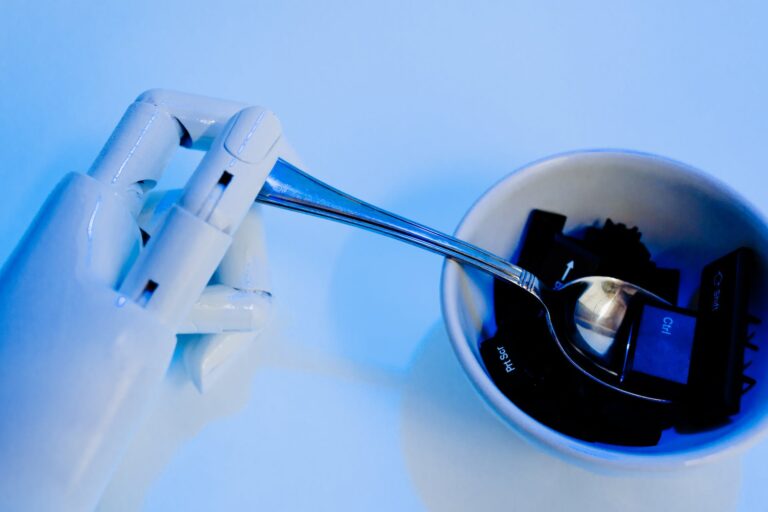
Teaspoon Measurement Gadgets
For those who prefer a more technology-driven approach to cooking, various teaspoon measurement gadgets are available to make your life easier. These gadgets aim to provide precise measurements quickly and conveniently. Here are some tools worth considering:
Digital teaspoon scales: These scales allow for accurate measurements in grams or ounces and are especially helpful when dealing with small quantities.
Adjustable measuring spoons: These spoons come with adjustable sliders that allow you to measure both teaspoon and tablespoon quantities without the need for multiple spoons.
Pros and Cons of Teaspoon Measurement Gadgets
While teaspoon measurement gadgets can streamline the measuring process, it’s important to consider their pros and cons before investing in them:
Pros:
Increased precision: Gadgets provide accurate weight measurements, ensuring precise teaspoon quantities.
Convenience: Gadgets often come with easy-to-use features, making them a convenient tool for everyday cooking.
Versatility: Some gadgets offer the flexibility to measure multiple quantities, eliminating the need for various spoons.
Cons:
Cost: Teaspoon measurement gadgets can be expensive compared to traditional measuring spoons.
Maintenance: Electronic devices may require battery replacements or regular cleaning, adding to the overall maintenance.
Common Teaspoon Measurement Mistakes
Despite our best efforts, mistakes can still occur during teaspoon measurement. Identifying and correcting these common errors is essential to maintaining the accuracy and quality of your culinary creations. Here are some common teaspoon measurement mistakes to watch out for:
Inconsistent leveling: Failing to level off excess ingredients accurately can result in uneven measurements and affect the final dish’s taste and texture.
Eyeballing quantities: Estimating teaspoon measurements instead of using precise techniques can lead to inconsistencies.
Using the wrong spoon size: Different spoon sizes can hold different volumes, so using the incorrect spoon can impact measurement accuracy.
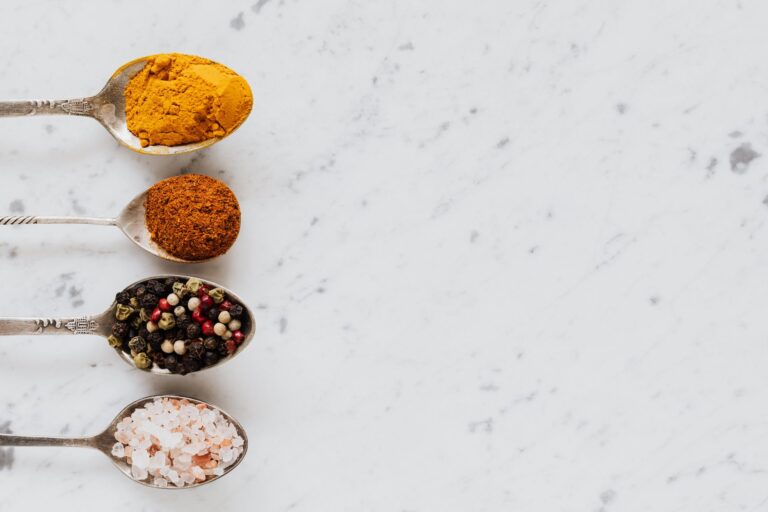
Teaspoon Measurement in Different Cuisines
While teaspoon measurements are commonly used in many cuisines worldwide, it’s important to note that variations exist across different culinary practices. Cultural preferences and traditional recipes often lead to differences in teaspoon measurement techniques. Here are a few examples:
Indian cuisine: Traditional Indian recipes often call for spices to be added in precise teaspoon measurements, allowing for a balanced flavor profile.
Moroccan cuisine: Moroccan cuisine’s intricate flavors and aromas rely on precise teaspoon measurements to create the perfect blend of spices.
Japanese cuisine: In Japanese cooking, teaspoon measurements are used to achieve balance and precision in delicate dishes like sushi and miso soup.
Adapting Teaspoon Hacks to Global Culinary Delights
While teaspoon measurements may vary across cuisines, the teaspoon hacks discussed in this article can be adapted and applied to culinary traditions worldwide. By mastering these hacks, you can add your personal touch to global gastronomic treasures.
Expert Tips for Accurate Teaspoon Measurement
To truly elevate your teaspoon measurement skills, it’s helpful to gather insights from experienced chefs and cooks. Their expertise and advice can provide invaluable guidance for enhancing your culinary prowess. Here are a few expert tips:
Experiment with different spoon types to find the one that yields the most accurate teaspoon measurements for you.
Prioritize precision over speed when measuring ingredients to create consistently delicious dishes.
Fine-tune your techniques based on the specific ingredients you’re working with to ensure optimal results.
Practical Examples
Applying teaspoon hacks to common recipes can help you incorporate accurate measurements seamlessly. Here’s a practical guide to using teaspoon hacks in everyday cooking:
Recipe: Homemade Tomato Sauce
Before teaspoon hack: Eyeballing the quantity of dried herbs and spices often results in imprecise measurements.
After teaspoon hack: Use the spoon tilt method or water displacement technique to ensure accurate teaspoon measurements of herbs and spices, enhancing the flavor of your tomato sauce.
Troubleshooting Teaspoon Measurement Issues
Even with the best teaspoon measurement techniques, challenges can arise. It’s important to address these issues promptly to maintain accuracy in your cooking. Here are common challenges in teaspoon measurement and their solutions:
Ingredients with varying densities: For ingredients like flour or brown sugar that can be packed or loosely filled, use the spoon tilt method to ensure consistent measurements.
Sticky ingredients: Measuring sticky substances, such as honey or molasses, can be challenging. Spraying the spoon with non-stick cooking spray before measuring can prevent ingredients from sticking and ensure accurate measurements.
Dealing with small quantities: When measuring minute amounts of ingredients, such as spices, consider using a toothpick to transfer the ingredients to the spoon effectively.
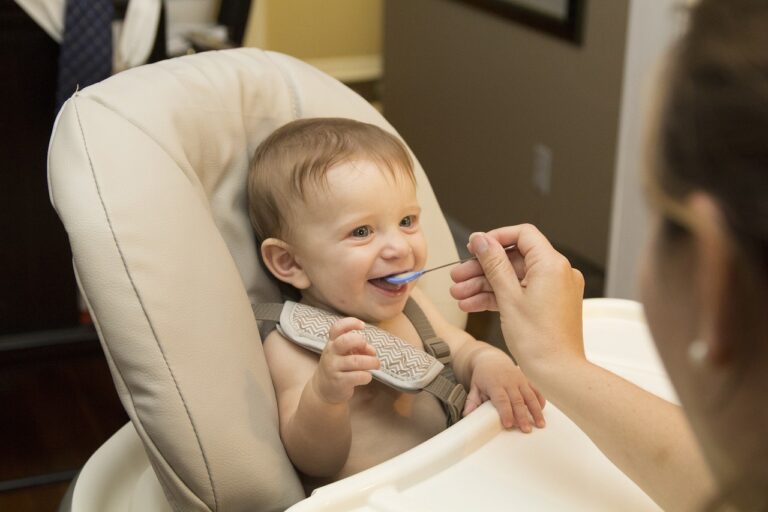
Teaspoon Measurement and Health
Beyond accuracy and flavor, teaspoon measurement also plays a role in maintaining a healthy diet. By measuring ingredients precisely, you can control the amount of seasoning, sugar, or other components in your meals. Here’s how teaspoon measurement can contribute to a healthier cooking experience:
Nutritional Impact: Measuring precise amounts of high-sodium ingredients, like salt and soy sauce, allows for better regulation of your sodium intake.
Balancing Flavor: Accurate teaspoon measurements prevent over-seasoning, enabling a mindful approach to culinary creations that promote healthier choices.
FAQ: Teaspoon Hacks – How to Measure Teaspoon with a Spoon
Q1: Can I use any spoon to measure a teaspoon?
A1: Ideally, it’s best to use a standard teaspoon for accurate measurements. However, in a pinch, a regular dining spoon can be a close approximation.
Q2: How do I measure a teaspoon without a teaspoon measuring tool?
A2: Use a regular spoon from your kitchen. A level spoonful is roughly equivalent to a teaspoon, providing a practical alternative for quick measurements.
Q3: What’s the difference between a teaspoon and a tablespoon when using a regular spoon?
A3: In the absence of measuring tools, remember that a teaspoon is approximately one-third the size of a tablespoon. Adjust your measurements accordingly.
Q4: How can I measure liquid ingredients with a spoon?
A4: For liquids, use a regular spoon and fill it to the brim. One spoonful is generally considered equivalent to a teaspoon, offering a convenient way to measure liquids without a dedicated tool.
Q5: Can I use the back of the spoon for measuring?
A5: Yes, you can use the back of the spoon for leveling dry ingredients. Simply fill the spoon and then level it off using the back for a more accurate measurement.
Q6: How can I measure a heaping teaspoon with a regular spoon?
A6: To measure a heaping teaspoon, scoop up a generous amount with the spoon, allowing the ingredients to pile slightly above the spoon’s edge.
Q7: Are there specific spoons better suited for teaspoon measurements?
A7: While any spoon can be used, smaller spoons resembling traditional teaspoons are more accurate for precise measurements. Opt for smaller, narrower spoons when possible.
Q8: Can I substitute a teaspoon with a coffee spoon for measurements?
A8: Yes, a coffee spoon can be used as a substitute for measuring teaspoons. Ensure consistency by using the same spoon throughout your recipe.
Q9: What’s the best way to level ingredients when using a regular spoon?
A9: To level dry ingredients, run a straight-edged utensil (like a knife) across the back of the spoon, removing excess and providing a precise, leveled measurement.
Q10: How much is a teaspoon on a regular spoon?
A10: A teaspoon on a regular spoon is generally considered to be a level spoonful. However, for more accuracy, use a dedicated teaspoon measuring tool.
Q11: What measure equals 1 teaspoon?
A11: One teaspoon is equivalent to a level spoonful, typically found in standard teaspoon measuring tools or achieved using a regular kitchen spoon.
Q12: How do you measure a tablespoon with a regular spoon?
A12: Since a tablespoon is larger than a teaspoon, use a larger spoon from your kitchen. Remember that a tablespoon is about three times the size of a teaspoon.
Q13: How do you measure 3/4 teaspoons without a measuring spoon?
A13: To measure 3/4 teaspoons without a measuring spoon, use a regular spoon and fill it three-fourths full for a close approximation. Adjust based on your recipe’s requirements.
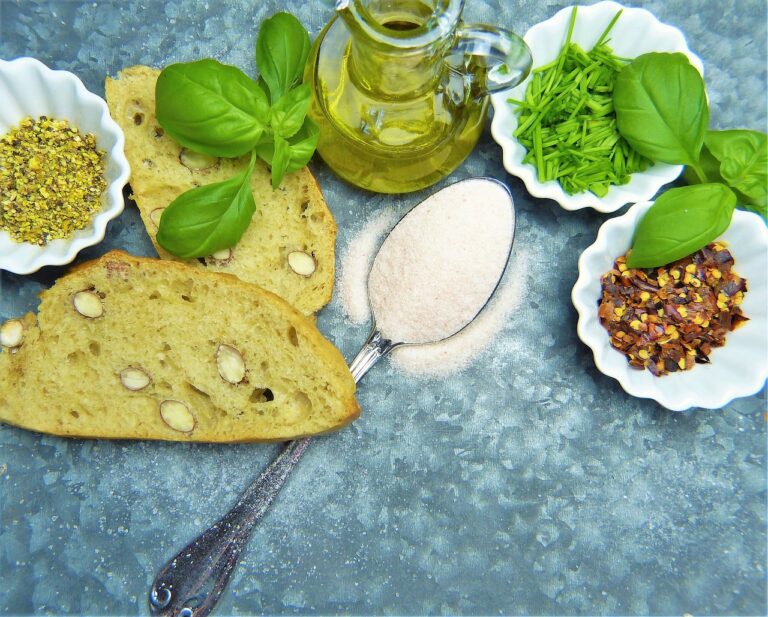
Conclusion
In conclusion, mastering the art of teaspoon measurement is vital for ensuring culinary excellence. From the basics of teaspoon measurement to understanding different spoon types, this article has explored various hacks to measure a teaspoon with a spoon. By applying the MECE framework, embracing teaspoon measurement gadgets, and learning from expert tips, you can enhance your culinary skills and achieve impeccable results in your cooking. So, embrace precision, experiment with different teaspoon hacks, and elevate your culinary journey!
Mastering teaspoon measurement is the key to culinary excellence. As you embark on this journey, don’t be afraid to experiment and find the teaspoon method that suits your cooking style best.
As an Amazon Associate, I earn from qualifying purchases.

